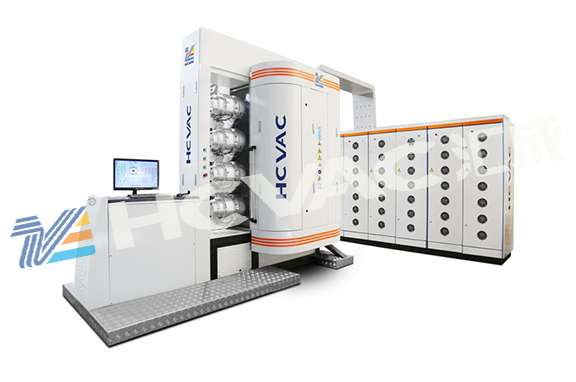pvd coating machine coating technology, simply put, uses evaporation, sputtering, etc. to emit film material particles in a vacuum environment, and deposits them on objects such as metal, glass, ceramics, semiconductors, and plastic parts to form a coating layer. Its main methods include the following:

Vacuum evaporation
The principle is to use an evaporator to heat the film material under vacuum conditions to vaporize or sublimate it. The evaporated particle flow is directly directed to the substrate and deposited on the substrate to form a solid film.
Sputter coating
Sputtering coating is under vacuum conditions. High voltage is connected to the cathode to stimulate glow discharge. Positively charged argon ions impact the cathode target, causing the film material particles to be ejected and deposited on the substrate to form a film layer.
Ion plating
Ion plating usually refers to a coating method that generates a large number of ions during the coating process. During the formation process of the film, the substrate is always bombarded by high-energy particles, and the strength and bonding force of the film layer are very strong.
Vacuum roll coating
Vacuum roll coating is a technology that uses various coating methods to continuously coat the surface of a roll of flexible film to achieve some special functional and decorative properties of the flexible substrate.
The above are several common coating methods that are commonly used in daily life. Most coating layers on substrates use these coating methods. However, when designing a
pvd coating machine, they must be used flexibly.



